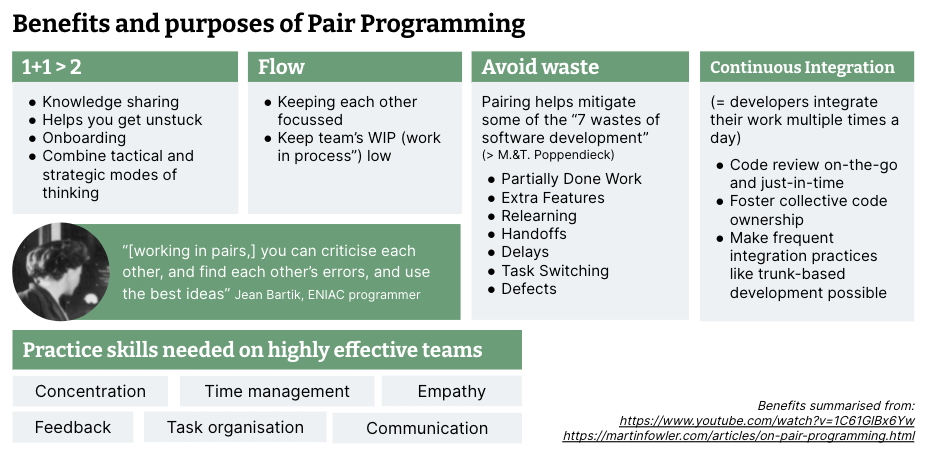Coding assistants do not replace pair programming
This article is part of “Exploring Gen AI”. A series capturing Thoughtworks technologists' explorations of using gen ai technology for software development.
10 August 2023
As previous memos have hopefully shown, I find GenAI-powered coding assistants a very useful addition to the developer toolchain. They can clearly speed up writing of code under certain circumstances, they can help us get unstuck, and remember and look things up faster. So far, all memos have mainly been about in-line assistance in the IDE, but if we add chatbot interfaces to that, there’s even more potential for useful assistance. Especially powerful are chat interfaces integrated into the IDE, enhanced with additional context of the codebase that we don’t have to spell out in our prompts.
However, while I see the potential, I honestly get quite frustrated when people talk about coding assistants as a replacement for pair programming (GitHub even calls their Copilot product “your AI pair programmer”). At Thoughtworks, we have long been strong proponents for pair programming and pairing in general to make teams more effective. It is part of our “Sensible Default Practices” that we use as a starting point for our projects.
The framing of coding assistants as pair programmers is a disservice to the practice, and reinforces the widespread simplified understanding and misconception of what the benefits of pairing are. I went back to a set of slides I use to talk about pairing, and the comprehensive article published right here on this site, and I crammed all the benefits I mention there into one slide:

The area where coding assistants can have the most obvious impact here is the first one, “1 plus 1 is greater than 2”. They can help us get unstuck, they can make onboarding better, and they can help the tactical work faster, so we can focus more on the strategic, i.e. the design of the overall solution. They also help with knowledge sharing in the sense of “How does this technology work?”.
Pair programming however is also about the type of knowledge sharing that creates collective code ownership, and a shared knowledge of the history of the codebase. It’s about sharing the tacit knowledge that is not written down anywhere, and therefore also not available to a Large Language Model. Pairing is also about improving team flow, avoiding waste, and making Continuous Integration easier. It helps us practice collaboration skills like communication, empathy, and giving and receiving feedback. And it provides precious opportunities to bond with one another in remote-first teams.
Conclusion
Coding assistants can cover only a small part of the goals and benefits of pair programming. That is because pairing is a practice that helps improve the team as a whole, not just an individual coder. When done well, the increased level of communication and collaboration improves flow and collective code ownership. I would even argue that the risks of LLM-assisted coding are best mitigated by using those tools in a pair (see “How it can get in the way” in a previous memo).
Use coding assistants to make pairs better, not to replace pairing.
latest article (Oct 15):
Understanding Spec-Driven-Development: Kiro, spec-kit, and Tessl
previous article:
next article:


